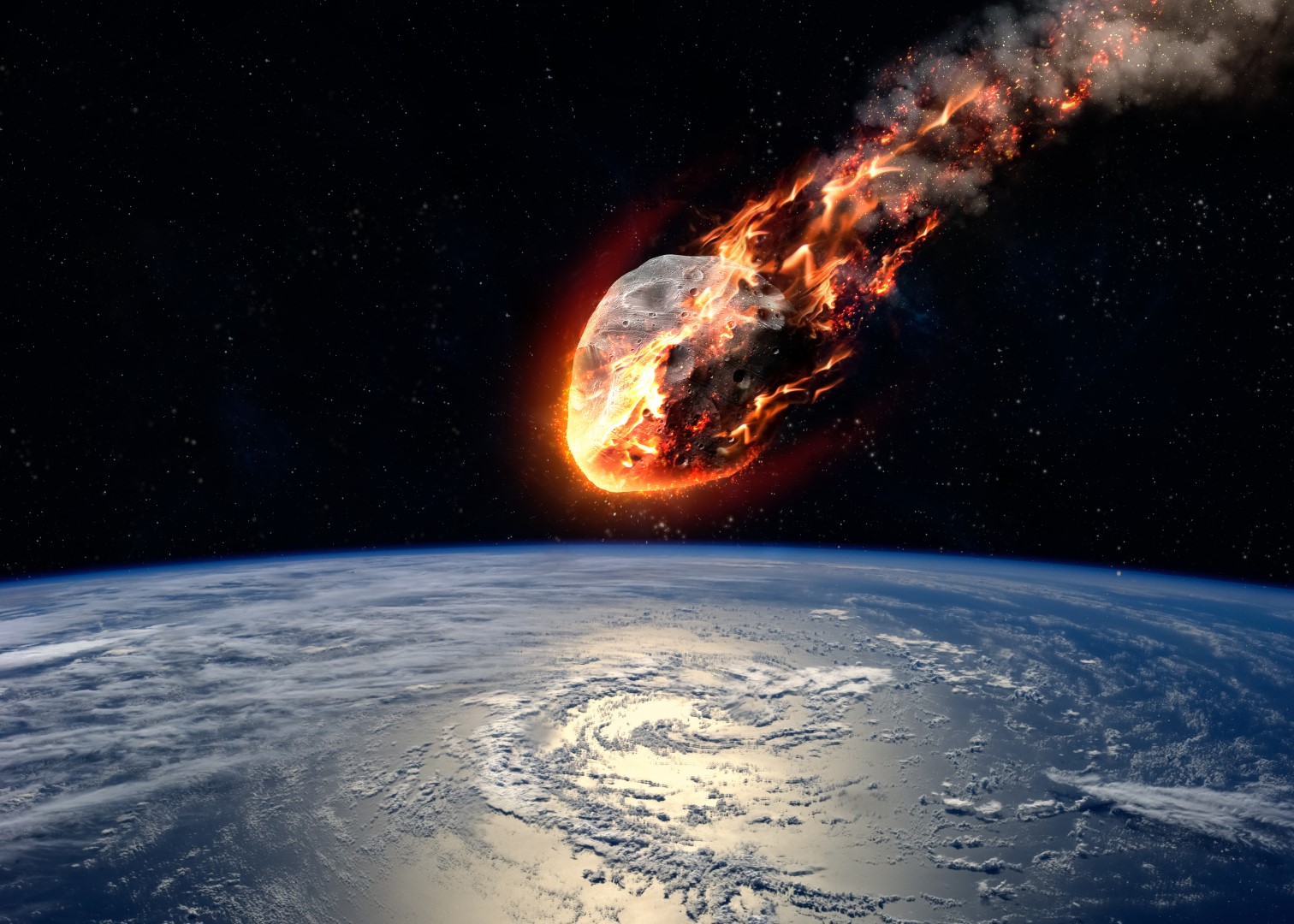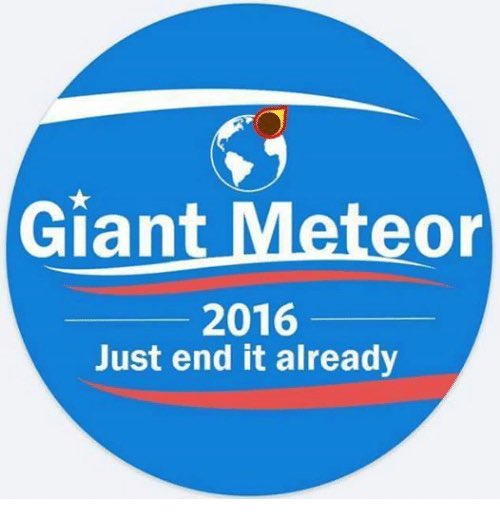
 The Sweet Meteor of Death is not going to upstage this election season.
The Sweet Meteor of Death is not going to upstage this election season.
That’s according to the NASA Near Earth Object Program that tracks roughly 15,000 asteroids, comets and gigantic pieces of space rock that pose any kind of threat to the Earth.
That may be bad news for 13 percent of American registered voters, who told Public Policy Polling last month that given a choice of Donald Trump, Hillary Clinton or “a giant meteor hitting the Earth,” they’d take the space rock.
In what might be one of the most dark-humor social media movements this election season, the “Sweet Meteor of Death 2016,” as an alternative to Trump or Clinton has caught fire and keeps blazing.
Sweet Meteor has several Facebook accounts, the biggest with 85,000 friends, while the Sweet Meteor O’ Death 2106 Twitter account (@smod2016) has 22,000 followers. That doesn’t include countless tweets assigning the #SMOD16 hashtag. There are coffee mugs and T-shirts for sale, and videos and memes galore. There are unconfirmed reports on blogs that Clinton even bought some Sweet Meteor tees.
“The Meteor is particularly appealing to independent voters, functionally in a three-way tie at 27 percent, to 35 percent for Clinton and 31 percent for Trump,” PPP reported in its national poll taken June 27-28 of 853 registered voters.
Various blogs and accounts indicate some promises of SMOD, including wiping out ISIS, being tough on Putin and Iran, ending world hunger, changing Washington politics. That makes it attractive to several constituencies.
NASA is not commenting on Sweet Meteor’s candidacy. In fact, it’s safe to say the space agency is taking a “not with a 10-foot pole” position about talking about it.
Fortunately, NASA’s Near Earth Object Program, at NASA’s Jet Propulsion Laboratory in Pasadena, California, looks skyward, through a massive, coordinated coalition of government, university, private and amateur satellites and all-sorts-of-technology telescopes, and sees nothing coming our way anytime soon, according to its website.
Among the 15,000 objects zipping around the solar system in the program’s sights are 586 “Potentially Hazardous Asteroids,” or PHAs, which are at least 500 feet in diameter and have orbits that would bring them within about 4.6 million miles of Earth. None are due anytime soon.
And none ever has been named SMOD16.
As recently as March 22, the last PHA, a comet dubbed P/2016 BA14, about 3,000-feet in diameter, whizzed through the neighborhood, about 2.2 million miles from Earth. That may seem a long way away (about nine times as far away as the moon,) but the NEO Program reported it was the third-closest comet flyby in recorded history.
There’s nothing else close to that size on the horizon, but there’s always something out there. Monday, according to the NEO Program, an asteroid about the size of a car is expected to pass inside the moon’s orbit, coming within 164,000 miles of our Big Green and Blue. On Wednesday an asteroid about the size of a jetliner will pass within 2.6 million miles of Earth. And Monday, an asteroid about the scale of a 25-story building will fly within about 4 million miles of Earth-sweet-home.
That doesn’t mean there aren’t smaller objects crashing down all the time. The NEO Program reported in 2014 that, in the previous 20-year period, 586 very small asteroids plummeted through the Earth’s atmosphere and burned up in fireballs or explosions, the most notorious being the 2012 Chelyabinsk meteor, a 65-foot wide chunk of space rock that rattled the region of Russia. But that was hardly a Sweet Meteor of Death.
In other words, Gary Johnson has a better chance of beating Trump and Clinton.



